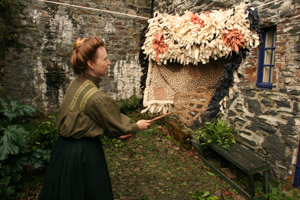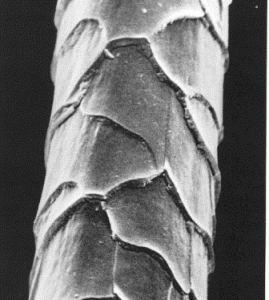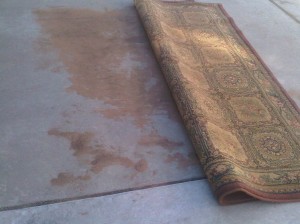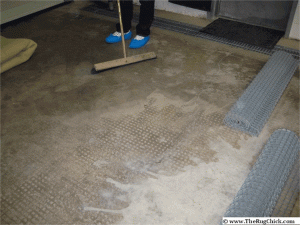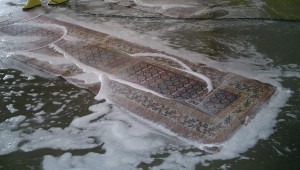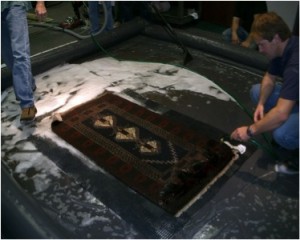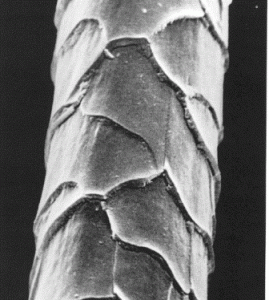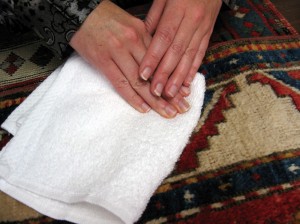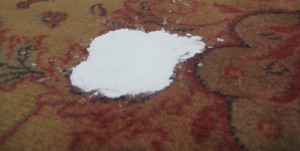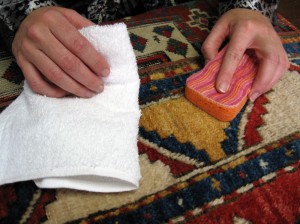YOUR RUG FIRST-AID KIT: CLUB SODA, CORN STARCH, AND WHITE COTTON TOWELS
Blot, Rinse, Blot
The time will come when something is spilled on your rug – coffee, soda, wine, or juice. There is a tendency to grab a cleanser and scrub the area, and this inevitably causes
more permanent harm than good.
A good emergency system is a very simple one, and all you need is club soda (or soda water) and cotton towels.
BLOT – RINSE – BLOTImmediately blot the wet area with a white cotton towel.
Do not scrub the affected area, as this untwists and breaks the wool, silk, or cotton face fibers. (If the spot is an oil or dense substance, use a spoon or other curved tool to scoop up as much as you can before you begin the blotting process.)
Look at the wet towel for two things:
- Is the liquid spill absorbing into the towel? …and also,
- Are any of the rug’s dyes absorbing into the towel?
If the rug’s dyes are absorbing into the towel, blot a bit more and then
STOP! No more work can be done to this area without causing the area’s dyes to bleed together. This type of damage can devalue your rug, so you want to stop
before you make it worse. At this point you can pack the area with corn starch (or salt) and this will absorb the moisture and the spill into the powder.
If the rug’s dyes are NOT absorbing into the towel (you only see the spill absorbing into it), then place a folded towel underneath the affected area and using a sponge dampen the affected area with club soda. This will help you continue to remove the spill substance into the towel. Once you believe you have removed as much as you can through blotting, if you are still worried about anything foreign being in the fibers, or possible damage occurring to the dyes (if it is a pet stain or other damaging acid stain), then you can pack the area with corn starch.
When you believe the absorption to be complete, elevate the treated area so that airflow can reach the back of the rug (prop it up) and dry the foundation thoroughly. Do this for at least one day to ensure complete drying. During this process, the surface of the rug will feel dry to the touch, however, the cotton foundation will still have moisture within it, and without air drying it will eventually lead to mildew and dry rot. Use a warm hair dryer to assist if needed. (If you have used corn starch it becomes hard to the touch and caked when dry, and this can be broken apart with a spoon and scooped up and vacuumed away. However, you want to make sure the inner most cotton fibers are 100% dry, so elevate the rug to dry for at least a day.)
If you are unsure about anything, it's probably best to contact a rug cleaning specialist and get help.
(To find a good one in your area, click here.)
